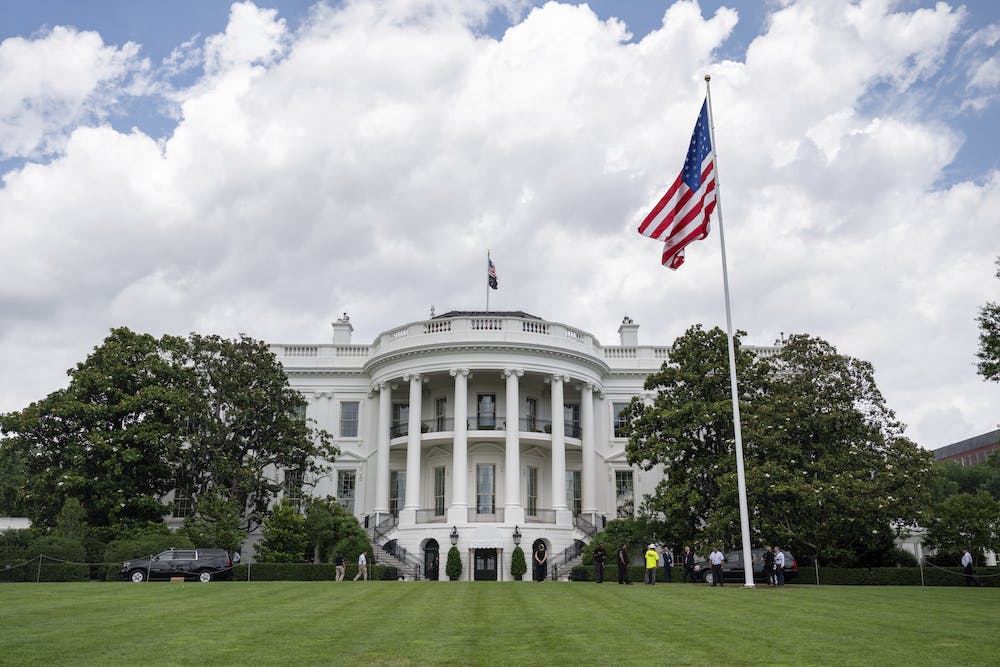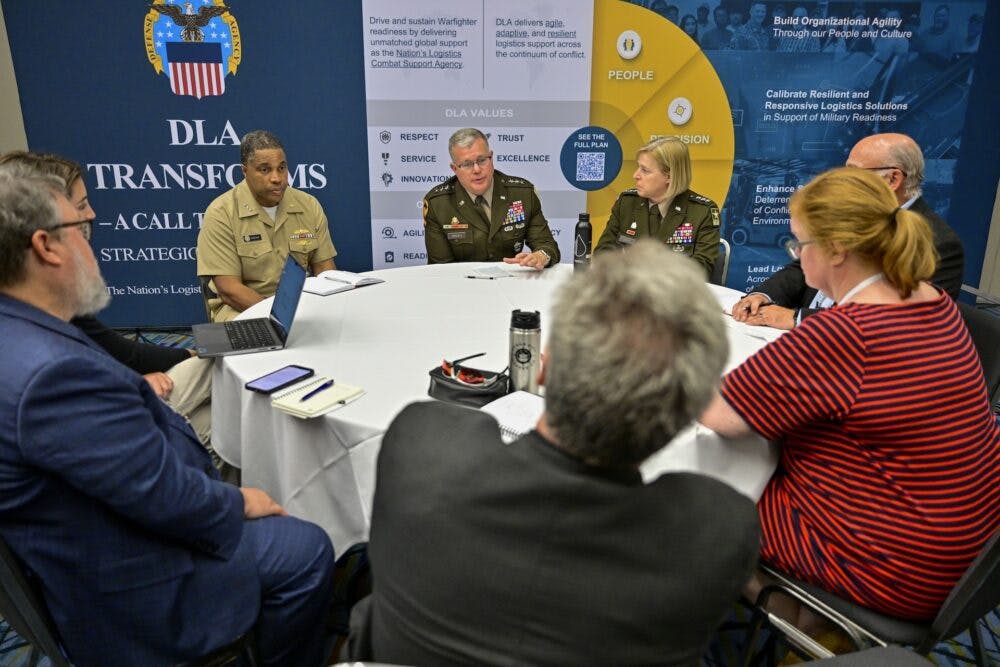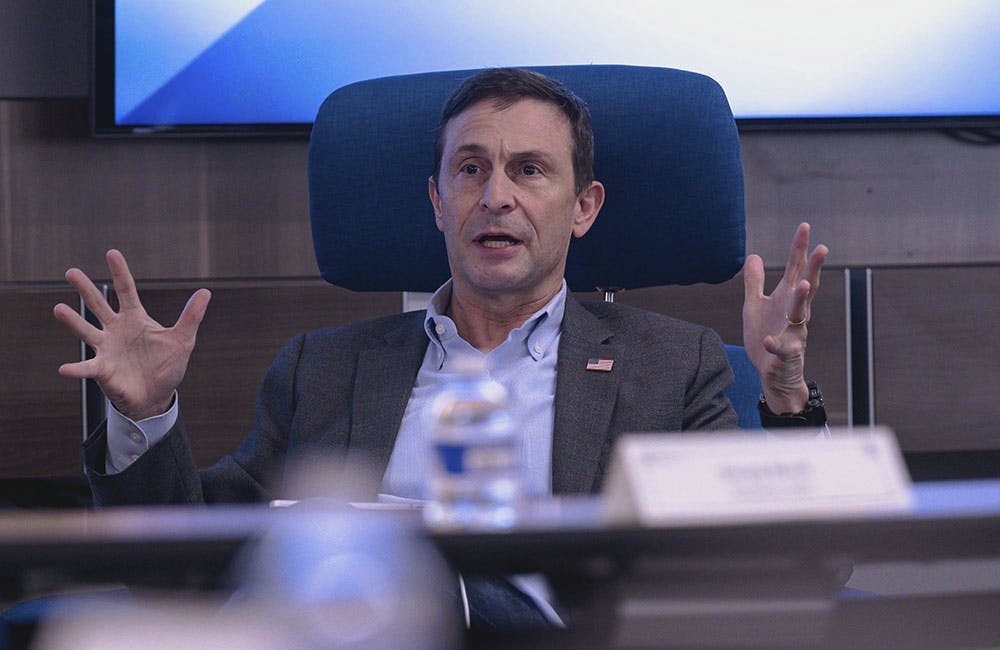Navy’s Plan for Modular Open Systems Streamlines Innovation
MOSA enhances interoperability, accelerates technology adoption and modernizes legacy systems across the armed services.

Editor’s Note: Jacob Glassman’s comments do not reflect the position of the Department of the Navy and are his own personal views.
The Department of the Navy is building out its Modular Open Systems Architecture (MOSA) to speed up emerging technology adoption, rapidly prototype new solutions and replace aging legacy systems, Jacob Glassman, technical advisor to the Assistant Secretary of the Navy for Research, Development and Acquisition, explained during an interview with GovCIO Media & Research.
MOSA is the Defense Department’s preferred method for implementation of open systems. The services issued the first MOSA tri-service memo was in 2019, mandating all new programs and tech refreshes leverage the approach. The Secretaries of the Army, Navy and Air Force signed the latest MOSA memo at the end of last year, reaffirming the services’ commitment to the strategy.
The newest memo states “MOSA shall be implemented and promulgated among the military services to facilitate rapid transition and sharing of advanced warfighting capability to keep pace with the dynamic warfighting threat.”
Navy’s MOSA 1.0 Targets Speed
The Navy’s first iteration of the MOSA implementation plan aims to spur innovation and boost interoperability, Glassman explained.
“It’s foundationally a process, procedure, fundamentals on how we do engineering,” Glassman told GovCIO Media & Research in a recent interview. “The whole idea is we need to be developing our combat systems to have a modular open system architecture instead of these very large monolithic architectures that only one provider can provide and also really muscles out innovation and small business.”
Interoperability between the Navy and the other services is a boon to the DOD’s CJADC2 mission and simplifies acquisition and modernization standards to ensure consistency across systems.
“Instead of the Navy building their truck — or organization A builds their 20-wheeler truck, and the Air Force brings a 16-wheeler truck — it’s like, ‘no, no, here are the standards,’” Glassman said.
Glassman said creating these standards opens the door for “multiple different people [to] innovate, propose new solutions [and] different modules.”
MOSA Boosts Solutions Sharing
He said MOSA allows exchange between services like the Army, Air Force and Navy to better share systems that work well, add emerging technologies as they develop and replace legacy technology as it becomes obsolete.
Glassman pointed to an example where the architectures of the MH-60 Seahawk, CH-47 Chinook and AH-64 Apache helicopters were unified through the use of the tri-service memo to commit each service to using MOSA for all their acquisition and development.
“If you have an electronic warfare module, or a navigation module, why shouldn’t we be able to share that amongst all of our helicopters? They have different missions, but it’s still a helicopter,” Glassman said. “If we were able to develop a module that can operate in a denied environment for Apache, why do we need to completely redesign all of that from scratch to make that work with MH 60?”
The Navy’s MOSA implementation plan is in its 1.0 phase, with plans to update the plan annually until it reaches a final version with 3.0.
“At the end of the day, we want to be a team here. That’s how it’s really going to work,” Glassman said.
This is a carousel with manually rotating slides. Use Next and Previous buttons to navigate or jump to a slide with the slide dots
-

DOD Turns to Skills-Based Hiring to Build Next-Gen Cyber Workforce
Mark Gorak discusses DOD’s efforts to build a diverse cyber workforce, including skills-based hiring and partnerships with over 480 schools.
20m listen -

Navy Memo Maps Tech Priorities for the Future Fight
Acting CTO’s memo outlines critical investment areas, from AI and quantum to cyber and space, as part of an accelerated modernization push.
5m read -

DOD Can No Longer Assume Superiority in Digital Warfare, Officials Warn
The DOD must make concerted efforts to address cyber vulnerabilities to maintain the tactical edge, military leaders said at HammerCon 2025.
4m read -

Marine Corps Operation StormBreaker Slashes Software Delivery Timelines by 17x
New program aims to deliver critical digital capabilities to warfighters at the "speed of relevance" by overhauling traditional processes.
4m read -

Trump Orders Spark Government-Wide Acquisition Overhaul
As Trump pushes for a faster, simpler procurement system, agencies are leveraging AI and adapting strategies to meet new requirements.
5m read -

A Look at Federal Zero Trust Transformation
Recent developments from CISA and DOD show how government is advancing zero trust quickly.
20m read -

Army Combines Commands to Propel Innovation Under New Transformation Plan
Lt. Gen. Miles Brown outlines a new transformation strategy after the AFC–TRADOC merger to integrate new technologies within 18 months.
4m read -

AI Enables Coast Guard’s Workforce to Transform Operations
The Coast Guard’s Deputy CIO Brian Campo delves into the ways AI is pushing the service to rethink its core services, workforce and operations.
14m watch -

New Army Acquisition Plan Cites Autonomy, Predictive Analytics
Officials outline how the Army Transformation Initiative signals a broader shift toward efficiency with tech and acquisition reform.
4m read -

AI Revolutionizes Defense Decision-Making
AI enhances access to vital information for defense leaders, empowering faster, more informed decision-making on and off the battlefield.
29m watch -

DOD's Tech Advantage Hinges on Commercial Collaboration, Says DIU Director
Seamless public-private sector integration is crucial for national security to compete with global powers, DIU Director Doug Beck said.
4m read -

Air Force, Coast Guard Talk Data Security Efforts for AI Development
The services' AI initiatives include efforts like creating clean training data, countering data poisoning and bridging siloed teams.
4m read
















